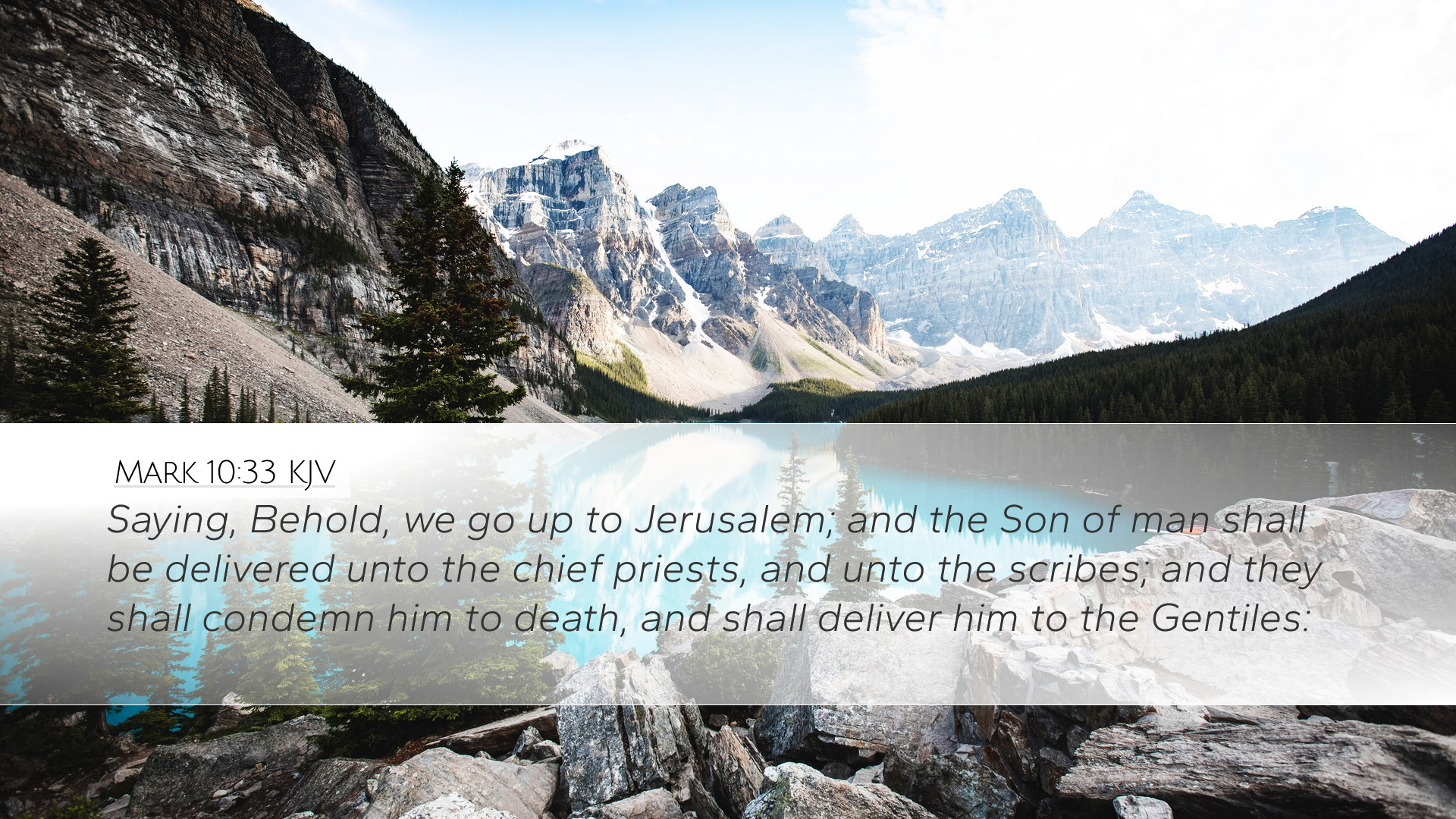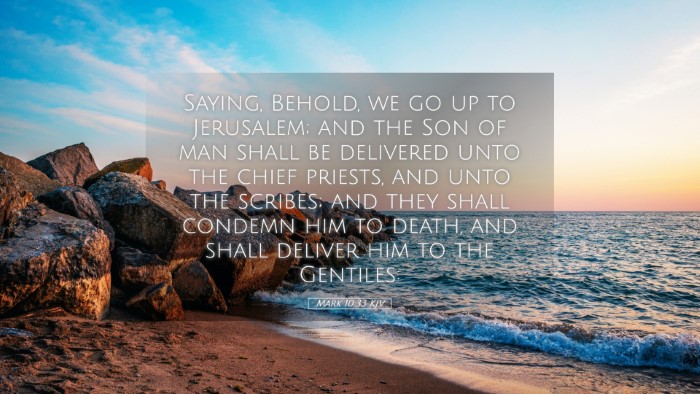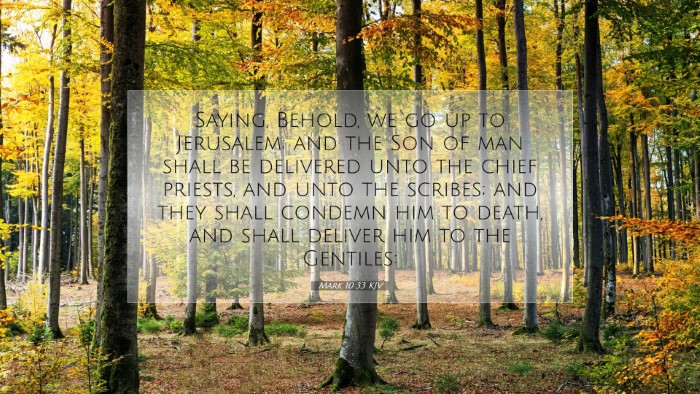Commentary on Mark 10:33
Mark 10:33 states: "Behold, we go up to Jerusalem; and the Son of man shall be delivered unto the chief priests, and unto the scribes; and they shall condemn him to death, and shall deliver him to the Gentiles."
Contextual Overview
This verse is pivotal as it encapsulates Jesus’ foretelling of His passion. It occurs during the final journey to Jerusalem, where Jesus outlines the suffering He will soon endure. This moment reflects not only His impending sacrifice but also sets the stage for understanding His mission and the profound implications for the faith community.
Insights from Public Domain Commentaries
1. Matthew Henry's Commentary
Matthew Henry emphasizes the prophetic nature of Christ's announcement. He notes that Jesus is aware of the suffering awaiting Him, which speaks to His divine foreknowledge. Henry observes that the phrase "We go up to Jerusalem" indicates unity in purpose between Jesus and His disciples, despite their misunderstanding of the future events.
- Unity in Mission: Jesus and His disciples are aligned towards a common destination, foreshadowing the unity necessary in the body of Christ, especially during times of trial.
- Divine Foreknowledge: Christ’s foretelling serves as a testament to His messianic role and the fulfillment of Old Testament prophecies regarding the suffering servant.
2. Albert Barnes' Commentary
Albert Barnes expounds on the significance of the terms used by Jesus. He mentions that "Son of man" is a title reflecting both His humanity and divinity, indicating His role in history. Barnes stresses that the involvement of the chief priests and scribes points to the religious leaders' accountability in Christ's death, portraying the tragedy of their spiritual blindness.
- Historical Context: The mentioning of the chief priests and scribes reveals the conflict between Jesus and the Jewish leaders, promoting an understanding of the socio-religious landscape of the time.
- Human Experience of Christ: By referring to Himself as the "Son of man," Jesus identifies with human suffering. Barnes posits that this aspect of Christ's identity is critical for His role as the Savior who empathizes with human struggles.
3. Adam Clarke's Commentary
Adam Clarke provides a thorough examination of the prophecy’s implications. He notes the fulfillment of this prediction through the actions of both Jews and Gentiles in the crucifixion of Christ. Clarke suggests that understanding this verse helps believers grasp the concept of divine sovereignty intermingled with human actions.
- Divine Sovereignty vs. Human Agency: Clarke highlights how the plan of salvation involved human actors who, while operating within their own motives, ultimately fulfill God’s redemptive purpose.
- Significance of Jerusalem: Jerusalem is more than a geographical location; it symbolizes the focal point of God's redemptive mission through Jesus’ sacrificial death.
Theological Implications
Mark 10:33 stands as a crucial intersection of prophecy and fulfillment, inviting a reflection on several theological themes:
- Christology: This verse deepens the understanding of who Jesus is—fully man and fully God—demonstrating His readiness to endure suffering for humanity’s sake.
- Fulfillment of Scripture: The foretelling of His suffering supports the claim that Jesus is the promised Messiah, who fulfills the prophecies concerning the suffering servant found in Isaiah.
- Call to Discipleship: Jesus models the path of suffering that His followers are called to embrace. It challenges believers to understand that suffering is often integral to fulfilling God’s purposes.
Conclusion
Mark 10:33 serves as a profound declaration of Jesus' mission and purpose. Through shared insights from Matthew Henry, Albert Barnes, and Adam Clarke, it becomes evident that this verse not only foretells Christ’s passion but also lays foundational truths about His identity, the interplay of divine sovereignty and human agency, and the call to a deeper discipleship that embraces the cross. As pastors, students, and scholars reflect on this text, they are invited into a richer understanding of their faith in light of Christ's journey toward Jerusalem and His ultimate sacrifice.


